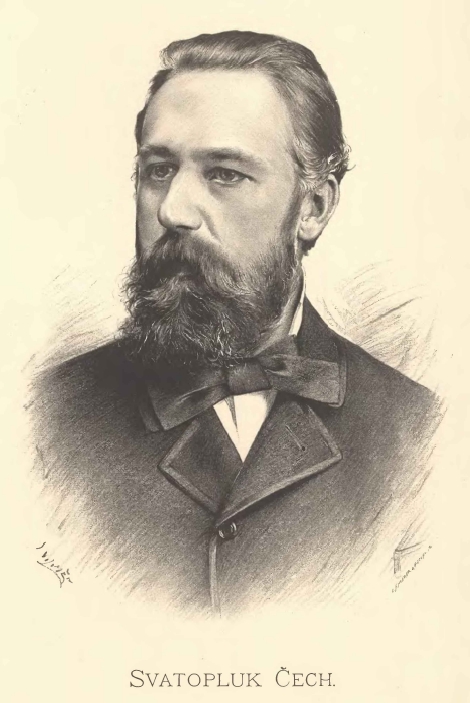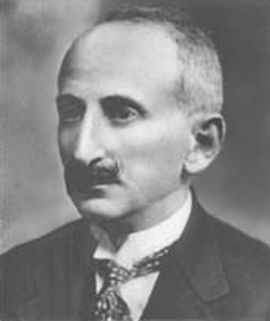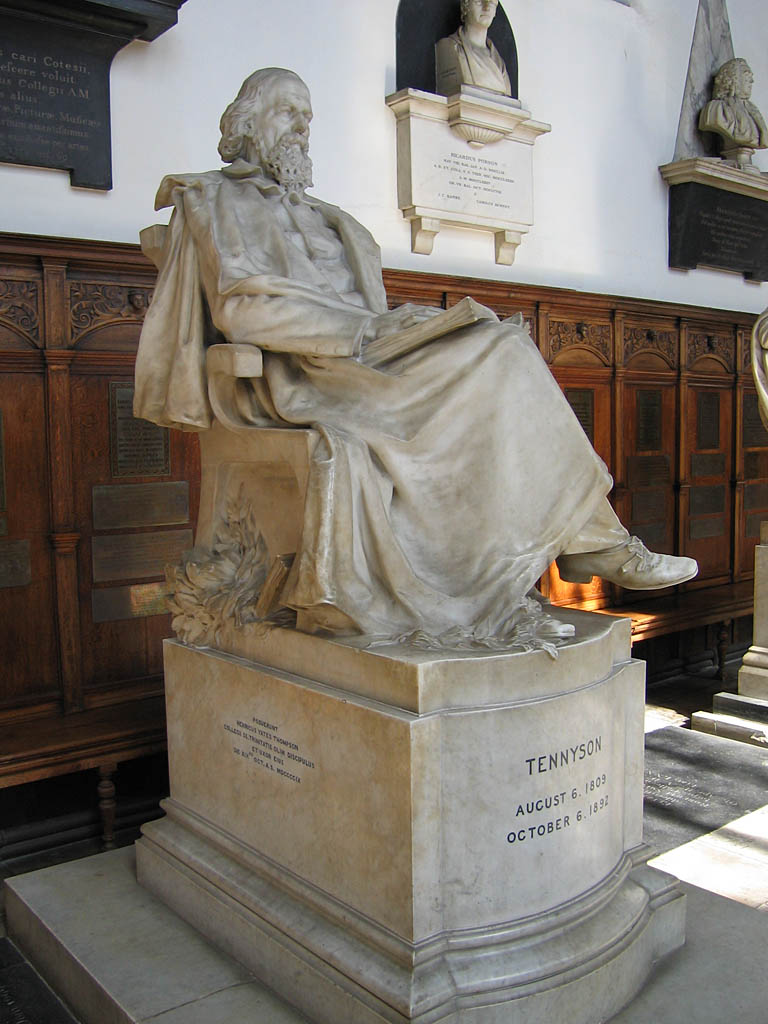|
Trochaic Octameter
Trochaic octameter is a poetic meter with eight trochaic metrical feet per line. Each foot has one stressed syllable followed by an unstressed syllable. Trochaic octameter is a rarely used meter. Description and uses The best known work in trochaic octameter is Edgar Allan Poe's "The Raven", which uses five lines of trochaic octameter followed by a "short" half line (in reality, 7 beats). By the end of the poem, the latter half line takes on the qualities of a refrain. Another well-known work is Banjo Paterson's "Clancy of the Overflow", which uses four lines of trochaic octameter for each verse throughout. Other examples are Robert Browning's ''A Toccata of Galuppi's'', Alfred Tennyson's '' Locksley Hall'', and Rudyard Kipling's ''Mandalay''. (Compares Locksley Hall and Mandalay.) Lines in these poems are catalectic (' x ' x ' x ' x ' x ' x ' x ' ). A line of trochaic octameter is eight of these in a row: We can scan this with a 'x' mark representing an unstressed syllable and ... [...More Info...] [...Related Items...] OR: [Wikipedia] [Google] [Baidu] |
Poetry
Poetry (derived from the Greek ''poiesis'', "making"), also called verse, is a form of literature that uses aesthetic and often rhythmic qualities of language − such as phonaesthetics, sound symbolism, and metre − to evoke meanings in addition to, or in place of, a prosaic ostensible meaning. A poem is a literary composition, written by a poet, using this principle. Poetry has a long and varied history, evolving differentially across the globe. It dates back at least to prehistoric times with hunting poetry in Africa and to panegyric and elegiac court poetry of the empires of the Nile, Niger, and Volta River valleys. Some of the earliest written poetry in Africa occurs among the Pyramid Texts written during the 25th century BCE. The earliest surviving Western Asian epic poetry, the '' Epic of Gilgamesh'', was written in Sumerian. Early poems in the Eurasian continent evolved from folk songs such as the Chinese ''Shijing'', as well as religious hymns (the S ... [...More Info...] [...Related Items...] OR: [Wikipedia] [Google] [Baidu] |
Locksley Hall
"Locksley Hall" is a poem written by Alfred Tennyson in 1835 and published in his 1842 collection of ''Poems''. It narrates the emotions of a rejected suitor upon coming to his childhood home, an apparently fictional Locksley Hall, though in fact Tennyson was a guest of the Arundel family in their stately home named Loxley Hall, in Staffordshire, where he spent much of his time writing whilst on his visits. According to Tennyson, the poem represents "young life, its good side, its deficiencies, and its yearnings". Tennyson's son Hallam recalled that his father said the poem was inspired by Sir William Jones's prose translation of the Arabic Mu'allaqat. Poetic form "Locksley Hall" is a dramatic monologue written as a set of 97 rhyming couplets. Each line follows a modified version of trochaic octameter Trochaic octameter is a poetic meter with eight trochaic metrical feet per line. Each foot has one stressed syllable followed by an unstressed syllable. Trochaic octameter is ... [...More Info...] [...Related Items...] OR: [Wikipedia] [Google] [Baidu] |
Svatopluk Čech
Svatopluk Čech (21 February 1846 in Ostředek near Benešov – 23 February 1908 in Prague) was a Czech writer, journalist and poet. Biography Čech studied at gymnasium (secondary school) in Prague, then studied law, and later worked in the journals Květy, Lumír and Světozor. His first poem, ''Husita na Baltu'', was published in the almanac ''Ruch'' in 1868. Similarly to his work ''Adamité'', it is inspired by history (Hussite Wars). His poem ''Evropa'' (1878) takes its cue from revolutionary movements of the time, his poem ''Slávie'' (1882) propagates ideals of Slavic unity, the poem ''Václav z Michalovic'' (1880) depicts religious oppression by the Jesuits, his poem ''Lešetínský kovář'' (1883 confiscated, 1899) social problems of industrialization. The books of lyrical poetry ''Jitřní písně'' (1887) and ''Nové písně'' (1888) reflect the national rebirth of the Czech people, and his poetry cycle ''Písně otroka'' reflects social problems. His best known w ... [...More Info...] [...Related Items...] OR: [Wikipedia] [Google] [Baidu] |
Bolesław Leśmian
Bolesław Leśmian (born Bolesław Lesman; January 22, 1877The exact date of his birth is disputed: the act of birth mentions 1877, Leśmian himself used 1878, while the date mentioned on his tombstone is 1879. – November 5, 1937) was a Polish poet, artist and member of the Polish Academy of Literature, one of the first poets to introduce Symbolism and Expressionism to Polish verse. Though largely a marginal figure during his lifetime, Leśmian is now considered one of Poland's greatest poets. He is, however, little known outside of his home country, mostly on account of his neologisms-rich idiosyncratic style, dubbed "almost untranslatable" by Czesław Miłosz and "the ultimate and overwhelming proof for the untranslatability of poetry" by noted Polish Shakespearean translator, Stanisław Barańczak. Biography Bolesław Leśmian was born January 22, 1877, in Warsaw, Congress Poland, Russian Empire to a family of Polonized Jewish intelligentsia. He spent his childhood an ... [...More Info...] [...Related Items...] OR: [Wikipedia] [Google] [Baidu] |
Scansion
Scansion ( , rhymes with ''mansion''; verb: ''to scan''), or a system of scansion, is the method or practice of determining and (usually) graphically representing the metrical pattern of a line of verse. In classical poetry, these patterns are quantitative based on the different ''lengths'' of each syllable. In English poetry, they are based on the different levels of ''stress'' placed on each syllable. In both cases, the meter often has a regular foot. Over the years, many systems have been established to mark the scansion of a poem. Overview Systems of scansion, and the assumptions (often tacit or even subconscious) that underlie them, are so numerous and contradictory that it is often difficult to tell whether differences in scansion indicate opposed metrical theories, conflicting understandings of a line's linguistic character, divergent practical goals, or whether they merely constitute a trivial argument over who has the "better ear" for verse. There is even a debate am ... [...More Info...] [...Related Items...] OR: [Wikipedia] [Google] [Baidu] |
Dactyl (poetry)
A dactyl (; el, δάκτυλος, ''dáktylos'', “finger”) is a foot in poetic meter. In quantitative verse, often used in Greek or Latin, a dactyl is a long syllable followed by two short syllables, as determined by syllable weight. The best-known use of dactylic verse is in the epics attributed to the Greek poet Homer, the Iliad and the Odyssey. In accentual verse, often used in English, a dactyl is a stressed syllable followed by two unstressed syllables—the opposite is the anapaest (two unstressed followed by a stressed syllable). An example of dactylic meter is the first line of Henry Wadsworth Longfellow's epic poem ''Evangeline'' (1847), which is in dactylic hexameter: :''This is the / forest prim- / eval. The / murmuring / pines and the / hemlocks, The first five feet of the line are dactyls; the sixth a trochee. Stephen Fry quotes Robert Browning's poem " The Lost Leader" as an example of the use of dactylic metre to great effect, creating verse with "great rhy ... [...More Info...] [...Related Items...] OR: [Wikipedia] [Google] [Baidu] |
Systems Of Scansion
Scansion ( , rhymes with ''mansion''; verb: ''to scan''), or a system of scansion, is the method or practice of determining and (usually) graphically representing the metrical pattern of a line of verse. In classical poetry, these patterns are quantitative based on the different ''lengths'' of each syllable. In English poetry, they are based on the different levels of ''stress'' placed on each syllable. In both cases, the meter often has a regular foot. Over the years, many systems have been established to mark the scansion of a poem. Overview Systems of scansion, and the assumptions (often tacit or even subconscious) that underlie them, are so numerous and contradictory that it is often difficult to tell whether differences in scansion indicate opposed metrical theories, conflicting understandings of a line's linguistic character, divergent practical goals, or whether they merely constitute a trivial argument over who has the "better ear" for verse. There is even a debate a ... [...More Info...] [...Related Items...] OR: [Wikipedia] [Google] [Baidu] |
Mandalay (poem)
"Mandalay" is a poem by Rudyard Kipling, written and published in 1890, and first collected in '' Barrack-Room Ballads, and Other Verses'' in 1892. The poem is set in colonial Burma, then part of British India. The protagonist is a Cockney working-class soldier, back in grey restrictive London, recalling the time he felt free and had a Burmese girlfriend, now unattainably far away. The poem became well known, especially after it was set to music by Oley Speaks in 1907, and was admired by Kipling's contemporaries, though some of them objected to its muddled geography. It has been criticised as a "vehicle for imperial thought", but more recently has been defended by Kipling's biographer David Gilmour and others. Other critics have identified a variety of themes in the poem, including exotic erotica, Victorian prudishness, romanticism, class, power, and gender. The song, with Speaks's music, was sung by Frank Sinatra with alterations to the text, such as "broad" for "girl", which ... [...More Info...] [...Related Items...] OR: [Wikipedia] [Google] [Baidu] |
Rudyard Kipling
Joseph Rudyard Kipling ( ; 30 December 1865 – 18 January 1936)''The Times'', (London) 18 January 1936, p. 12. was an English novelist, short-story writer, poet, and journalist. He was born in British India, which inspired much of his work. Kipling's works of fiction include the ''Jungle Book'' duology ('' The Jungle Book'', 1894; '' The Second Jungle Book'', 1895), ''Kim'' (1901), the '' Just So Stories'' (1902) and many short stories, including "The Man Who Would Be King" (1888). His poems include " Mandalay" (1890), " Gunga Din" (1890), "The Gods of the Copybook Headings" (1919), " The White Man's Burden" (1899), and "If—" (1910). He is seen as an innovator in the art of the short story.Rutherford, Andrew (1987). General Preface to the Editions of Rudyard Kipling, in "Puck of Pook's Hill and Rewards and Fairies", by Rudyard Kipling. Oxford University Press. His children's books are classics; one critic noted "a versatile and luminous narrative gift".Rutherford, Andrew ( ... [...More Info...] [...Related Items...] OR: [Wikipedia] [Google] [Baidu] |
Alfred Tennyson
Alfred Tennyson, 1st Baron Tennyson (6 August 1809 – 6 October 1892) was an English poet. He was the Poet Laureate during much of Queen Victoria's reign. In 1829, Tennyson was awarded the Chancellor's Gold Medal at Cambridge for one of his first pieces, "Timbuktu". He published his first solo collection of poems, ''Poems, Chiefly Lyrical'', in 1830. "Claribel" and "Mariana", which remain some of Tennyson's most celebrated poems, were included in this volume. Although described by some critics as overly sentimental, his verse soon proved popular and brought Tennyson to the attention of well-known writers of the day, including Samuel Taylor Coleridge. Tennyson's early poetry, with its medievalism and powerful visual imagery, was a major influence on the Pre-Raphaelite Brotherhood. Tennyson also excelled at short lyrics, such as "Break, Break, Break", "The Charge of the Light Brigade", "Tears, Idle Tears", and "Crossing the Bar". Much of his verse was based on classical mythol ... [...More Info...] [...Related Items...] OR: [Wikipedia] [Google] [Baidu] |
Meter (poetry)
In poetry, metre ( Commonwealth spelling) or meter (American spelling; see American and British English spelling differences#-re, -er, spelling differences) is the basic rhythm, rhythmic structure of a verse (poetry), verse or Line (poetry), lines in verse. Many traditional verse forms prescribe a specific verse metre, or a certain set of metres alternating in a particular order. The study and the actual use of metres and forms of versification are both known as prosody. (Within linguistics, "Prosody (linguistics), prosody" is used in a more general sense that includes not only poetic metre but also the rhythmic aspects of prose, whether formal or informal, that vary from language to language, and sometimes between poetic traditions.) Characteristics An assortment of features can be identified when classifying poetry and its metre. Qualitative versus quantitative metre The metre of most poetry of the Western world and elsewhere is based on patterns of syllables of particular typ ... [...More Info...] [...Related Items...] OR: [Wikipedia] [Google] [Baidu] |
A Toccata Of Galuppi's
"A Toccata of Galuppi's" is a poem by Robert Browning, originally published in the 1855 collection ''Men and Women''. The title refers to the fact that the speaker is either playing or listening to a toccata by the 18th-century Venetian composer Baldassare Galuppi. The poem consists of fifteen rhymed tercets; its prevailing meter is trochaic octameter catalectic. Musical background It is not known whether Browning was thinking of any one piece by Galuppi; in Galuppi's time, the terms "toccata" and " sonata" were less clearly differentiated than they later became, and were used interchangeably. A number of Galuppi's sonatas have been suggested as Browning's inspiration, but as Charles van den Borren wrote in ''The Musical Times'', "every poet has the right to evade the prosaic minutiae of fact", and it is impossible to state with confidence that one Galuppi piece has more claim than another to be the inspiration for the poem.Borren, Charles van den, trans. Richard Capell"Round ... [...More Info...] [...Related Items...] OR: [Wikipedia] [Google] [Baidu] |
.jpg)


.png)


